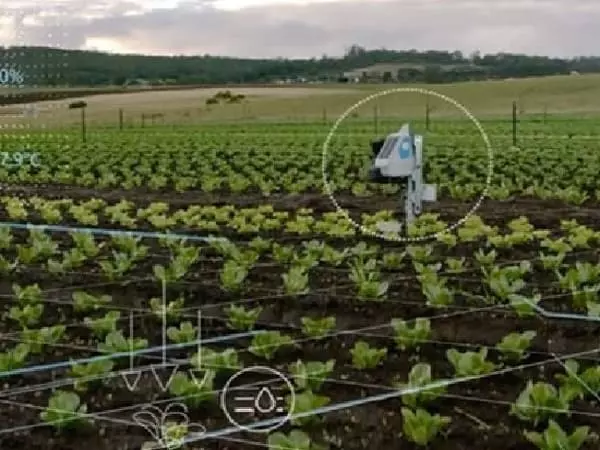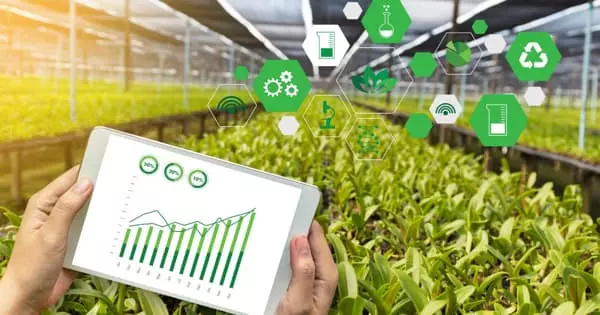One of the most difficult challenges facing farmers is a lack of adequate knowledge of nutrient management, in addition to other agronomic, environmental, and socioeconomic issues, resulting in food production that is insufficient to meet the demand of an ever-increasing population. Bioengineers developed smart sensing technology to help farmers use fertilizer more effectively while minimizing environmental damage.
The technology, described today in Nature Food, could assist growers in determining the best time to apply fertilizer to their crops and how much is required, taking into account factors such as weather and soil condition. This would reduce the costly and environmentally damaging effects of over-fertilizing soil, which emits the greenhouse gas nitrous oxide and can pollute soil and waterways.
Overfertilization has rendered 12% of once-arable land in the world unusable, and the use of nitrogen-based fertilizer has increased by 600% in the last 50 years. Crop growers, on the other hand, find it difficult to precisely tailor their own fertilizer use: too much and they risk environmental damage and money waste; too little and they risk poor crop yields. According to the researchers behind this new sensing technology, it could benefit both the environment and growers.
It’s difficult to overstate the problem of overfertilization, both environmentally and economically. Our technology could aid in addressing this issue by allowing growers to determine how much ammonia and nitrate are currently present in soil and predict how much will be present in the future based on weather conditions. This may allow them to tailor fertilization to the specific needs of the soil and crops.
Dr. Max Grell
The chemically functionalized paper-based electrical gas sensor (chemPEGS) measures ammonium levels in soil, which is converted to nitrites and nitrates by soil bacteria. It combines this with weather data, time since fertilization, pH, and soil conductivity measurements using a type of artificial intelligence known as machine learning. It uses this information to forecast how much total nitrogen the soil has now and how much it will have in the next 12 days, allowing it to predict the best time to fertilize.
The research study identifies how this new low-cost solution could assist growers in yielding maximum crops with minimal fertilization, particularly for fertiliser-hungry crops such as wheat. The technology has the potential to reduce both growers’ costs and the environmental impact of nitrogen-based fertilizers, which are the most commonly used type of fertilizer.
“It’s difficult to overstate the problem of overfertilization, both environmentally and economically,” said lead researcher Dr Max Grell, who co-developed the technology at Imperial College London’s Department of Bioengineering. Yields and income are declining year after year, and growers do not currently have the tools to combat this.
“Our technology could aid in addressing this issue by allowing growers to determine how much ammonia and nitrate are currently present in soil and predict how much will be present in the future based on weather conditions. This may allow them to tailor fertilization to the specific needs of the soil and crops.”

Nitrogen pollution
Excess nitrogen fertilizer emits nitrous oxide into the atmosphere, a greenhouse gas 300 times more potent than carbon dioxide that contributes to the climate crisis. Excess fertilizer can also be washed into waterways by rain, depriving aquatic life of oxygen and resulting in algal blooms and decreased biodiversity.
However, precisely tailoring fertilizer levels to soil and crop needs remains difficult. Testing is uncommon, and current methods of measuring soil nitrogen involve sending soil samples to laboratories – a time-consuming and costly process with results that are of limited use by the time they reach the grower.
This new low-cost method could speed up the soil testing process. While chemPEGS only measures ammonium, the machine learning component allows it to predict current nitrate levels as well as future nitrate and ammonium levels in the soil.
“Much of our food comes from soil — a non-renewable resource that we’ll lose if we don’t look after it,” said senior author and principal investigator Dr Firat Guder of Imperial’s Department of Bioengineering. This, combined with nitrogen pollution from agriculture, creates a conundrum for the planet, which we hope to address with precision agriculture. Our sensing technology can accurately measure and predict soil nitrogen, allowing us to forecast the impact of weather on fertilisation planning and tune timing for crop requirements, which we hope will help to reduce overfertilization while improving crop yields and profits for growers.”
The researchers anticipate that chemPEGS and associated AI technology, which are currently in the prototype stage, will be commercially available in three to five years with additional testing and manufacturing standardization.
With the world’s population rapidly increasing, finding new ways to feed everyone has become more important than ever, and global hunger is on the rise. Again, the FAO (Food and Agriculture Organization of the United Nations) estimates that approximately 795 million people are malnourished as a result of food insecurity. The vast majority of them (780 million) live in developing countries, primarily in Africa and Asia. As a result, food production in the developing world will need to double. Producers will face a difficult task if technology is not used to combat this threat.





